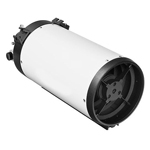 GSO RC 6" OTA
GSO RC 6" OTA
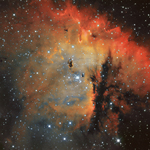 Pacman Nebula
Pacman Nebula
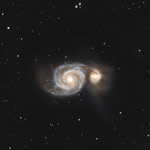 Whirlpool by Tarun Pulikanti
Whirlpool by Tarun Pulikanti
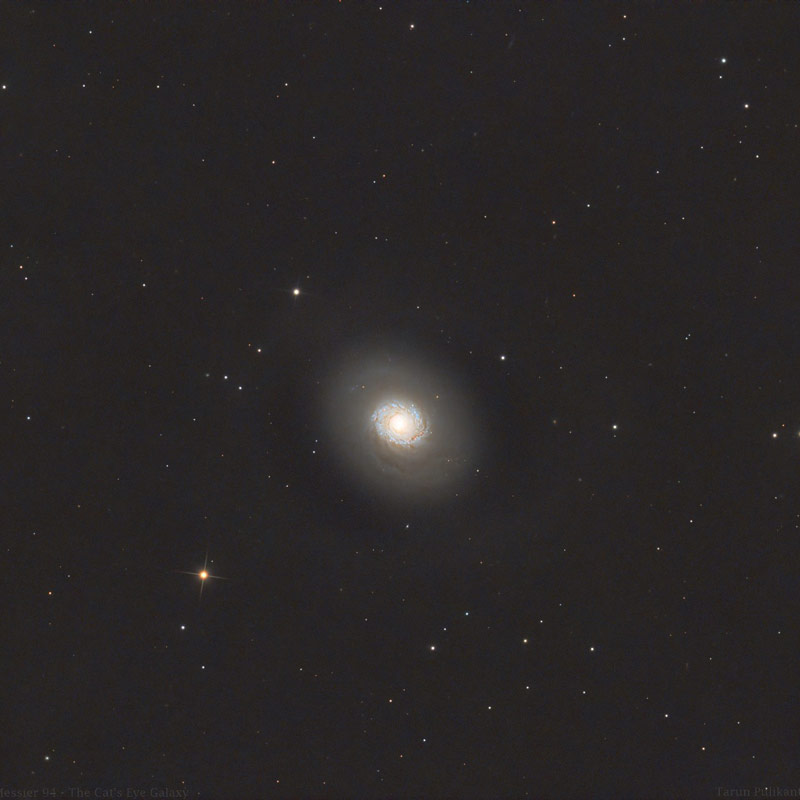 Cats Eye Galaxy by Tarun Pulikanti
Cats Eye Galaxy by Tarun Pulikanti
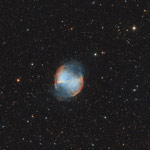 Dumbbel Nebula by Tarun Pulikanti
Dumbbel Nebula by Tarun Pulikanti
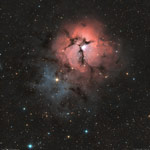 Trifid Nebula by Tarun Pulikanti
Trifid Nebula by Tarun Pulikanti
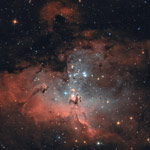 Eagle Nebula by Tarun Pulikanti
Eagle Nebula by Tarun Pulikanti
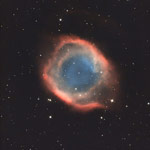 Helix Nebula by Tarun Pulikanti
Helix Nebula by Tarun Pulikanti
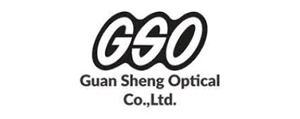
6" F/9 RC Astrograph Telescope is not only perfect for Astrophotography but also for observing.
It is extremely portable and offers a superb image quality and visual observing power too.
Advantages of RC Telescopes compared to MAC and SCT
Aperture 6" / 152mm.......Focal Length 1370mm
f/9 is faster than a 6" SC or Mak
illuminated field is much bigger
you can attach 2" eyepieces and full size SLR/DSLR cameras without vignetting
two hyperboloidical mirrors with 96% reflectivity lead to a bright image
faster cool-down time and no dew problems because of open tube design without front correcting plate
enough back focus for all kinds of accessories
M90 extension tubes for easy reaching of the focus are optional. Spacer, to be placed between focuser and telescope
fixed mirrors and 2" Crayford focuser with 1:10 dual speed transmission - no problems with mirror shift
Rotatable, 2" dual-speed (10:1) machined Crayford focuser provides precise focus adjustment control
Features one dovetail finder scope bases
corrected field is much bigger compared with a 6" SC
Computer optimized internal baffle system
Optical design
True Ritchey-Chrétien two-mirror Cassegrain optics, with hyperbolic primary and secondary mirrors. 6" aperture, 1370mm focal length, f/9 focal ratio. For more details, click on the “optics" icon above.
Hyperboloid Primary Mirror
Made of BK-7 optical glass. Polished to diffraction-limited or better surface accuracy. Unlike catadioptric designs (SCTs, Maksutovs, etc.) that move the primary mirror to focus (which can lead to image shift as the mirror moves), the GSO RC mirror is fixed to eliminate potential image shift. The fixed primary mirror also eliminates the frequent primary mirror collimation requirements of a Newtonian reflector.
GSO RC fixed primary and secondary mirrors “eliminate image shift, which has been the bane of Cassegrain scopes with moving-mirror focusing systems . . . It also keeps the effective focal length of the system constant, and the infinity focal point remains at a fixed point outside of the telescope, neither of which is the case with moving-mirror systems that change the separation between a Cassegrain’s primary and secondary mirrors."
Hyperboloid Secondary Mirror
Made of BK-7 optical glass. Polished to diffraction-limited or better surface accuracy. Mounted in a four-vane spider and fully collimatable.
Enhanced aluminum optical coatings
Both primary and secondary mirrors have enhanced aluminum mirror coatings, overcoated with a protective layer of quartz for long life. Reflectivity is in the 96% range, the same as the larger multi-thousand dollar R-C scopes.
Optical tube
Painted rolled steel, 7.5" o.d. x 19.25" long, with die-cast and machined aluminum front and rear cells.
Internal light baffles
Computer optimized primary and secondary baffling. Eight contrast-enhancing glare-stop baffles in the optical tube, multiple glare-stop microbaffles in the secondary mirror light shield, and four baffles in the primary mirror baffle tube provide truly dark sky backgrounds during imaging.
Dual-speed Crayford focuser
A 2" Crayford focuser is threaded onto the 90mm x 1mm pitch rear cell of the 6RC. The non-vignetting focuser has dual-speed focusing. There are two coarse focusing knobs. The right knob also has a smaller concentric knob with a 10:1 reduction gear microfine focusing ratio. This provides exceptionally precise image control during critical CCD imaging. All focus knobs are ribbed, so they are easy to operate, even while wearing gloves or mittens in cold weather.
Focuser travel
Focuser drawtube travel is 34mm, while back focus between the focuser's 2" accessory holder and the focal plane is 150mm. The 6RC falls 9-3/4" outside the back of the telescope, allowing plenty of room for all types of cameras, filter wheels, and ancillary equipment."
Extension Rings
Two extension rings (one 1" and one 2") areoptional to thread onto the rear of the scope (singly or in combination) between the scope rear cell and the focuser. These form a very rigid and tilt-free extension that moves the focuser out from the rear cell to accommodate the varying back-focus requirements of webcam/Deep Sky Imager-type cameras versus DSLRs. Typically, both rings (one 1" and one 2") will properly position most DSLRs at the 6RC focal plane. The “1- and 2-inch extensions, as well as conventional extension tubes that fit in the 2-inch focuser, mean that you can always assemble the system so it comes to focus with whatever camera and accessories you're using."
For even more impressive coma-free DSLR imaging with the GSO-6RC, consider adding field flattener. This modestly-priced imaging accessory essentially eliminates the residual field curvature inherent in all reflector telescope designs, so that the coma-free star images remain point-like all across the field of the APS-C size imaging chip used in most DSLR cameras. Use of field flattener with a DSLR will typically requires one optional 2" extension ring, instead of the two rings generally needed with a DSLR camera alone.
Compression ring accessory holders
The focuser drawtube ends in a 2" accessory holder that uses a non-marring soft brass compression ring to hold 2" imaging accessories in place. The compression ring won’t scratch the barrel of your accessories as an ordinary thumbscrew can. Also supplied is a 1.25" accessory holder that slips into the 2" compression ring holder to let you use 1.25" imaging accessories. Like the 2" eyepiece holder on the eyepiece holder rotation mechanism, the 1.25" adapter also uses a non-marring soft brass compression ring.
Mounting dovetail
Vixen-style dovetail bar runs the length of the underside of the optical tube. The dovetail can be removed, if desired, so the 6RC can be installed in optional user-supplied mounting rings for piggyback mounting on a larger scope.
Finderscope dovetail
A Vixen-style finderscope bracket dovetail base is installed on the upper left side of the optical tube. It can easily be removed if not needed. It will accept Vixen-style finderscope brackets as well as red dot-type finders.
| TELESCOPE SPECIFICATION | |
| Country of Manufacturing | TAIWAN |
| Best for viewing | Bright Deep sky |
| Best for Imaging | Deep sky |
| Astro-imaging capibility | Lunar, planetary and long exposure |
| RC 6 | 6" f/9 Ritchey-Chrétien Telescope |
| Optical Design | Ritchey- Chretien with a hyperbolic primary- and secondary mirror. |
| Diameter Primary Mirror | 152 mm Primary Mirror 96% reflectivity dielectrically coated/minimum 1/12th wave, Quartz glass |
| Focal Length | 1370 mm |
| Focal Ratio | f/9 |
| Optical type | Hyperbolic |
| Accepts Eyepiece Barrel Ø | 50.8mm (2") to 31.7mm(1.25") |
| Resolving power | 0.76 arc sec. |
| Limiting Stellar magnitude | 13.6 |
| Optical quality | Diffraction limited |
| Focuser | 1:10 Crayford focuser for extremely smooth focusing. The dual speed 1:10 focusing knob is particularly important for astro imaging. No image shift and up to 5kgs load capacity! The focuser accepts 2" and 1.25" accessories. |
| Standard Eyepiece(s) | Not included |
| View Finder Scope | Not included |
| Star Diagonal | Not included |
| Computer-optimized baffle system | The inside of the tube is lined with computer-optimized baffles for optimum suppression of stray light. |
| Tube materila | Aluminum |
| Lengt of optical tube | 19.1" |
| diameter of tube | 191 mm |
| Weight, optical tube | 12.1 lbs. ( 5.5 kg) |
| Other features | Vixen style dovetail mounting bar, 360-Degree rotating camera angle adjustment collar |
This device focuses a lot of light.
Looking directly at the SUN through this device can result in partial or complete loss of vision.
For observing the SUN, we recommend you buy a 'Solar Safety Film' for this Telescope.
Home
Contact Us
Happy Customers
Our History
Terms and Conditions
Privacy Policy
Refund Policy
Shipping Policy
Pay
STARTRACKER [ India ]
EXPLORE SCIENTIFIC [ USA ]
G.S.O. [ Taiwan ]
Goto Mounts / Tripods [ U.S.A ]
BRESSER [ Germany ]
William Optics [ Taiwan ]
DWARF LAB [ China ]